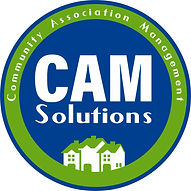Quartz Crystal Microbalance (QCM) Market on Track for Robust Growth

The Quartz Crystal Microbalance (QCM) Market is experiencing significant growth as industries increasingly demand ultra-sensitive measurement solutions. QCM technology, which enables real-time monitoring of mass changes at the nanogram level, is becoming a critical tool in material science, biotechnology, pharmaceuticals, and environmental analysis. As the focus on nanotechnology and biosensing intensifies, the market is poised for steady expansion through 2032.
In 2024, the global QCM market is valued at approximately USD 213 million and is projected to grow at a CAGR of 7.2% between 2025 and 2032. This growth is fueled by increasing adoption of QCM systems in laboratory research and quality control processes across academic, industrial, and healthcare institutions. QCM’s high sensitivity, reliability, and label-free operation offer a distinct advantage over traditional analytical methods.
The demand is also rising due to the expanding need for precise detection of biochemical interactions, surface phenomena, and thin-film deposition in advanced manufacturing environments. These features are especially valuable in developing biosensors, drug screening platforms, and materials with custom-engineered properties.
Request a Sample Report:https://dataintelo.com/request-sample/382514
The rise in research funding from government and private sectors has further propelled interest in QCM-based technologies. Universities and biotech firms are investing in equipment that can deliver highly accurate, real-time monitoring at the molecular level. This trend is accelerating innovation and expanding QCM applications beyond traditional fields.
Additionally, the miniaturization of QCM devices and integration with electronics and microfluidic systems have expanded their usability in portable and field-deployable formats. This evolution has created new use cases in food safety testing, environmental monitoring, and clinical diagnostics, enhancing the market’s long-term potential.
Despite the promising outlook, the Quartz Crystal Microbalance (QCM) Market faces some restraints. High initial costs and the need for specialized expertise in operating QCM systems can limit adoption, particularly among small labs and startups. Additionally, the availability of alternative sensing techniques may present moderate competition in cost-sensitive markets.
Key Market Dynamics and Insights:
Drivers:
Rising demand for real-time, ultra-sensitive measurement technologies.
Growth in biosensing, drug development, and nanotechnology applications.
Increasing R&D investments in academia and industry.
Advancements in device miniaturization and system integration.
Restraints:
High cost of QCM equipment and maintenance.
Need for trained personnel and technical expertise.
Competition from alternative mass sensing technologies.
Opportunities:
Expanding applications in medical diagnostics and environmental analysis.
Growing interest in label-free detection platforms.
Integration with AI and IoT for automated data collection.
Emerging markets seeking advanced scientific tools.
View Full Report : https://dataintelo.com/report/global-quartz-crystal-microbalance-qcm-market
Regionally, North America dominates the Quartz Crystal Microbalance (QCM) Market due to the strong presence of research institutions and substantial investments in biotechnology. Europe follows closely, driven by innovations in pharmaceutical research, nanotechnology, and material science. Both regions also benefit from a highly skilled workforce and favorable government research initiatives.
Asia-Pacific is projected to witness the fastest growth over the forecast period. Countries such as China, Japan, South Korea, and India are expanding their R&D infrastructure and focusing on high-tech manufacturing. The growing academic community and government-backed innovation programs are fostering adoption of advanced measurement tools, including QCM systems.
Latin America, the Middle East, and Africa are gradually entering the QCM landscape through academic collaborations and increased awareness of precision instrumentation. While still at a nascent stage, these regions offer untapped opportunities for manufacturers and suppliers looking to expand their global footprint.
Check Out the Report :https://dataintelo.com/checkout/382514
Technological innovation continues to be a vital growth engine for the QCM market. Recent developments in temperature-compensated sensors, wireless communication modules, and software interfaces have made QCM systems more versatile and user-friendly. Moreover, integration with machine learning and cloud-based platforms is enabling automated data interpretation and remote monitoring—opening new frontiers in digital sensing ecosystems.
The growing emphasis on point-of-care testing and lab-on-a-chip solutions in healthcare is another promising avenue. QCM’s ability to detect biomarkers in real time without chemical labeling makes it suitable for rapid diagnostics, infectious disease monitoring, and cancer detection. As healthcare systems worldwide shift toward preventive care and rapid testing, QCM technologies are expected to play a pivotal role.
Strategic Recommendations and Future Outlook:
The Quartz Crystal Microbalance (QCM) Market is well-positioned to capitalize on the convergence of biotechnology, nanoscience, and digital innovation. To stay competitive and maximize potential, stakeholders should focus on:
Product Differentiation: Enhance usability, portability, and integration capabilities for QCM systems tailored to specific industry needs.
Affordability & Accessibility: Develop cost-effective solutions for educational institutions and small research labs to increase market penetration.
Collaborative Innovation: Partner with academic, clinical, and industrial players to co-develop application-specific QCM systems.
Training & Support: Offer robust customer education programs to reduce operational barriers and improve user experience.
As science-driven industries continue to evolve, the demand for highly sensitive, real-time, and scalable measurement tools like QCM will rise. With expanding applications, supportive research investments, and continuous technology upgrades, the QCM market holds promising opportunities across the globe.

